Disclosure: We may get commissions for purchases made through links in this post.
The winter season is usually a challenge for all types of construction. The frigid temperature and snowy weather can make tasks double or even triple difficult to accomplish. But some repairs and assembly are best done during this time. This is why in this article, we have researched and scoured the internet, asked the experts on whether or not you can lay pavers during wintertime.
You can install pavers even during wintertime as long as the ground is not frozen. The main consideration to this is the moisture level on the ground. When the moisture is high, pouring and installing pavers will become more challenging, and to a point impossible.
Pavers require a stable sub-base to keep them anchored and secured, which is not the case if the ground is frozen. Continue reading to learn more about laying pavers during the winter season.
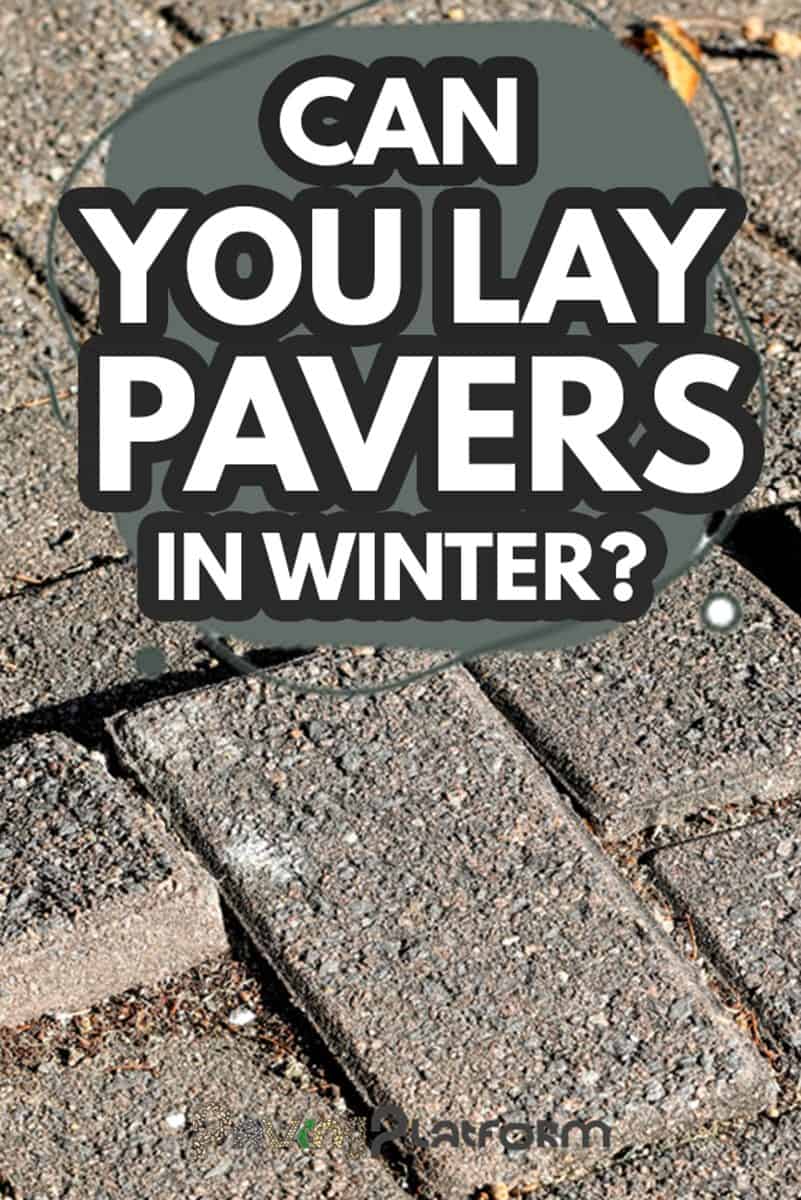
Can You Lay Pavers In Winter?
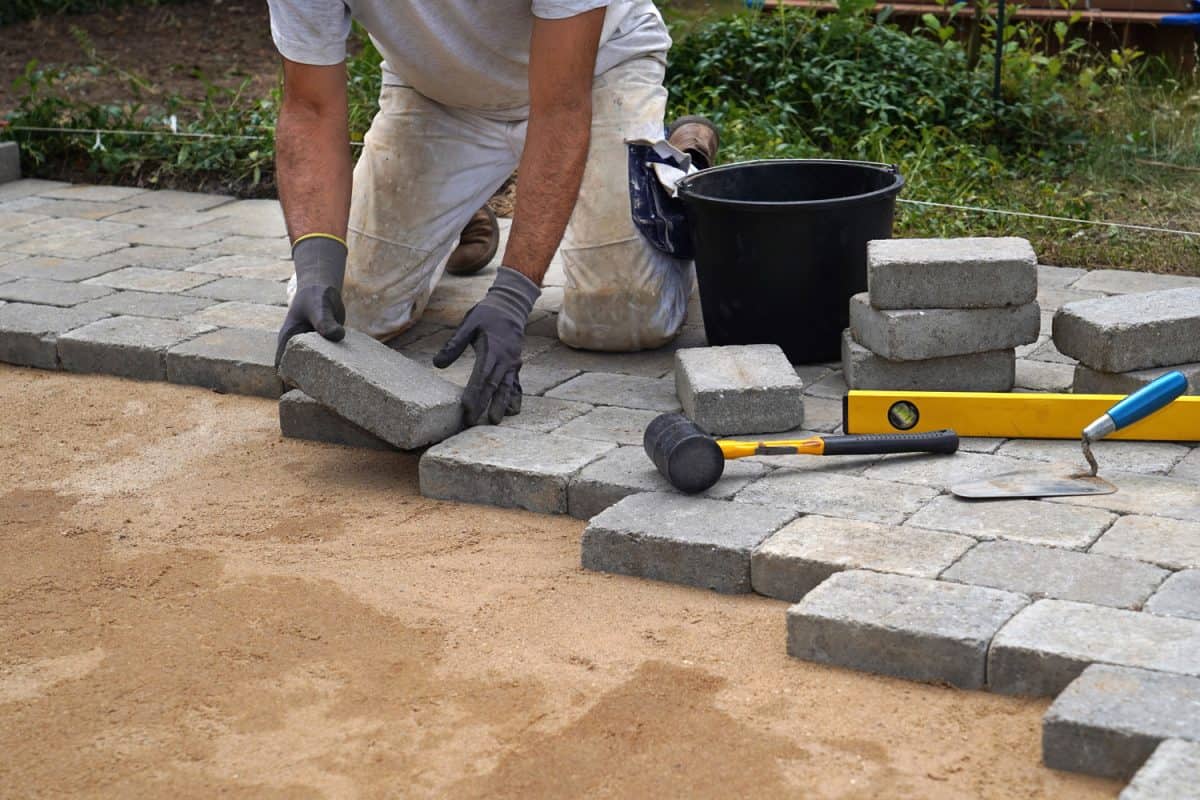
Laying pavers in the winter is possible, but there are things you have to consider before doing this undertaking. Normally, constructions during the wintertime are halted due to the intense weather, especially up north, where below-freezing temperatures are normal during this time.
But if you are living in the south, the temperatures can be more convenient compared to other parts of the country. In these places, laying pavers in the wintertime is more feasible and easier. This can also result in less moisture, especially if it will not snow or rain during these times.
Weathering, in general, can have many ramifications on constructions like pavers. During winter, the ground goes through a freeze-thaw cycle that can cause expanding and contracting of the soil, leading to the base of the pavers going out of place.
Another possible problem to be encountered because of the cold is the limitation to the human body. It would be extremely difficult for you or anyone to do such a project when the temperature drops below freezing. Prolonged exposure to these temperatures can cause hypothermia which can be very deadly.
Combatting this while working outside may require you to put on extra and heavier layers of clothing. This can make moving difficult and limited and with work like these, mobility is very important.
That's why you have to plan ahead and be mindful of the climate as this can heavily affect your productivity. Even with professional service, you need to consider their well-being and health, and not just demand work even under unreasonable circumstances.
Although there are some valid reasons why you might want your pavers and other yard construction to be done during the winter season. Having a finished yard by the end of the cold months will let you enjoy it during the fall and summer. That's also the main reason why there are hardscaping contractors that still offer services during winter. They use this as leverage to gain more income for their companies.
In the end, it would be great to have an agreement with your contractor about the limits of their service. Let them know that when the environment becomes too extreme, it would be fine to temporarily postpone work on your yard or pathways.
How cold can it be to lay pavers?
Mortars won't be as effective anywhere below 40 degrees Fahrenheit, if the weather forecast says that it will be below this temperature, or if the current temperature says it is, it would be wise to not lay pavers.
Very cold temperatures can cause mortar failure and will only result in removing the pavers and reconstructing them all over again.
Will pavers heave in winter?
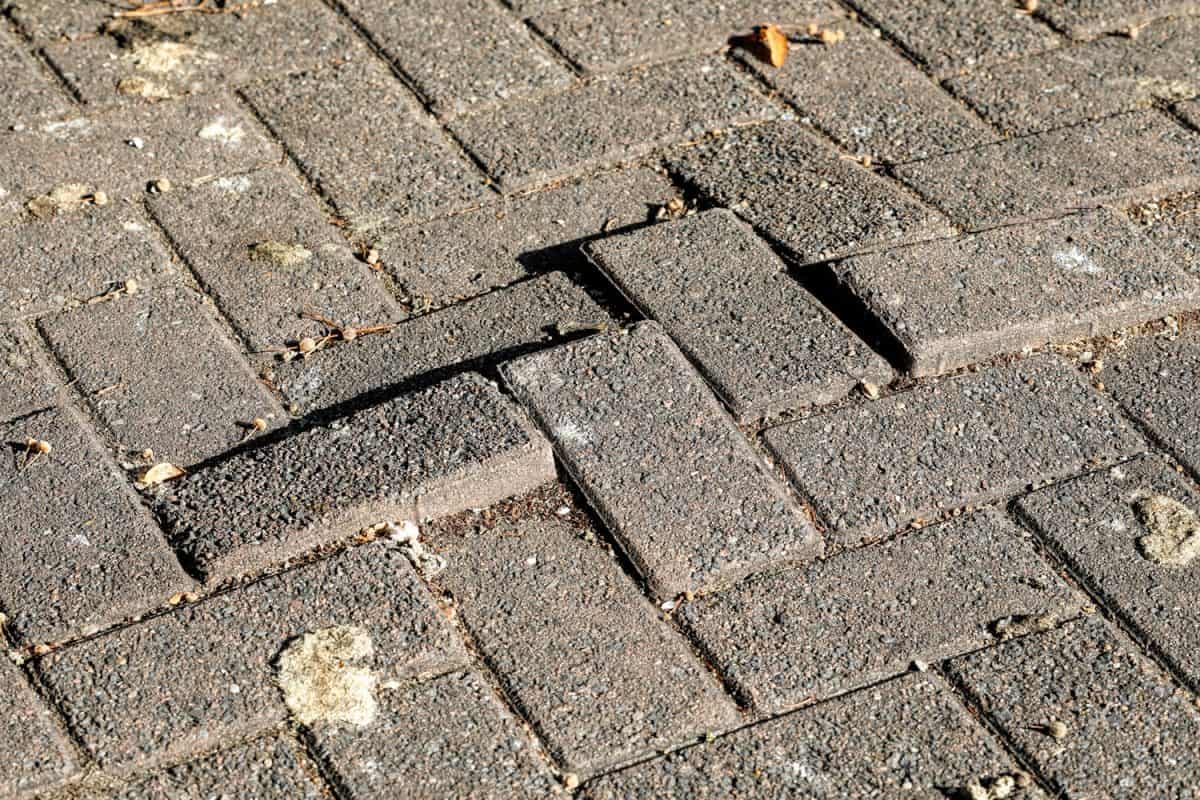
First of all, there are multiple reasons why pavers may heave during winter. The main reason for this is improper installation, but sometimes, extreme weather can cause heaving even in properly installed ones.
But these are usually only minor heaving and will not completely destroy your pavers. When they are properly installed, heaving during wintertime can be very prominent, even if the temperatures did not fall too low.
In a worst-case scenario, you can even experience cracking from your pavers, not just heaving. This is heavily amplified by not having proper drainage for your pavers.
The moisture caused by the weather and the freezing-thawing cycle experienced by the soil will cause it to rise. This force is enough to cause cracks or even completely break your pavers, especially if you are using brittle materials such as porcelain pavers.
How do you prevent a heaving sidewalk?
As we mentioned earlier, the best way to combat heaving on your sidewalk or pathwalks is by proper installation. If you lack the experience and knowledge in installing pavers, it is best to hire professional contractors to do such work for you. This will be a better investment for you as you can be assured that the job will be done properly.
Reducing frost penetration and moisture will be the number one priority when installing pavers. Professionals will also evaluate your soil if it is susceptible or not to freezing during winter.
Your drainage will also be taken into consideration. Proper drainage for your pavers helps keep water from soaking and damaging the stones.
If your soil is inhibiting expansive clay-like properties, then you will need to have a deeper base. This will avoid your pavers from shifting out of place which can cause cracking, deformations, and also heaving.
Now if you lack the technical knowledge and instrument to do such inspections before doing your sidewalks, then there is a high chance that you will deal with heaving, especially during winter. This is one disadvantage of doing DIY projects.
How far does frost go down?
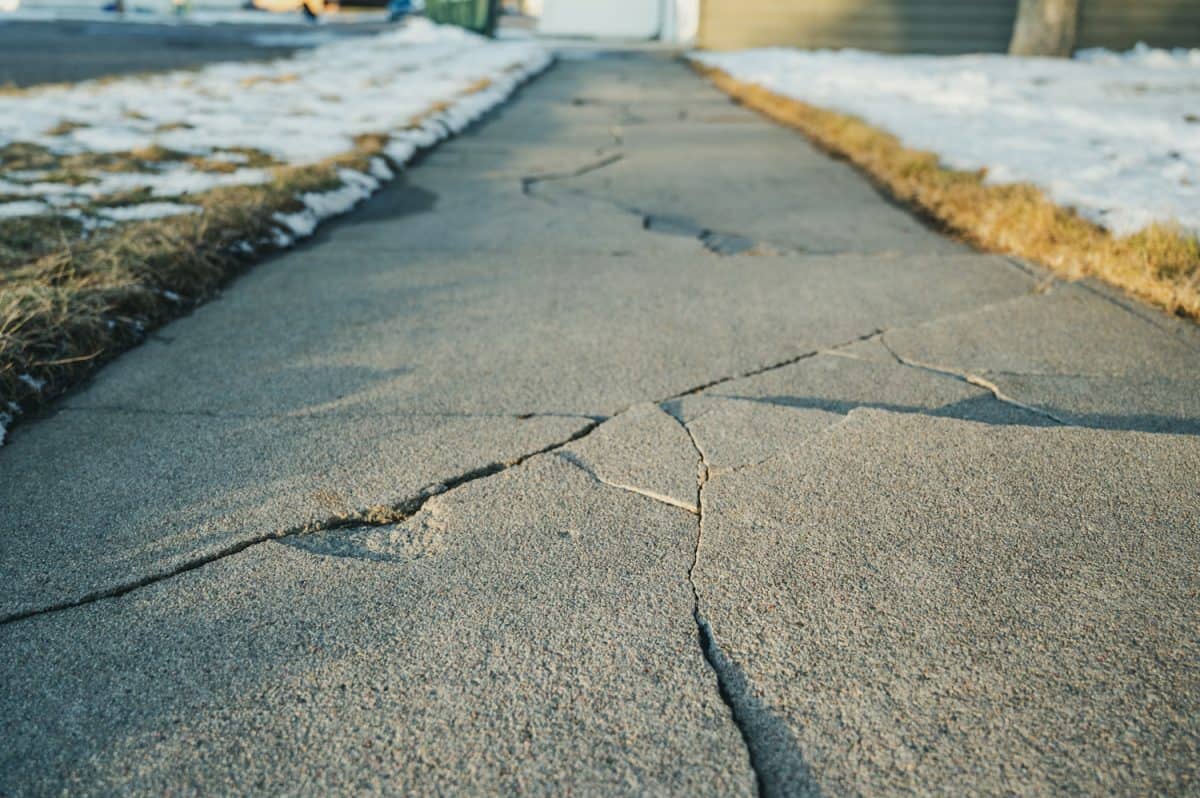
According to the Federal Highway Administration, the frost line in the United States is observed at 0 to 8 feet. Now this varies from temperature to temperature, you cannot expect the same numbers in other countries that experience winter. But this is the average depth at which frost reaches beyond the soil. The property of the soil to transfer heat also plays a major part in determining the frost line of the soil.
In the frost line, you can expect water present in this area to be affected when the temperature in the surface drops. This is also correlated to the earlier mentioned freezing and thawing cycle that the soil experiences during winter.
Why do you have to dig below the frost line?
It all has to do with building codes. These codes are there for our safety. Sewers and pipes are dug and installed below the frost line. This is done to avoid them from freezing. The same goes for construction.
When you're building for a base or a foundation, you would want those to go through the frost line for the same reason. Freezing can damage the integrity of your base and foundation, and heaving soil can easily displace and cause cracks to the base which results in overall structural damage.
By having them go through the frost line and settle in soil that will not be affected by the freeze and thaw cycle, you can guarantee a more stable and firm soil on which they will be erected.
This will prevent unnecessary shifts of location. And the deeper you go adds more stability to your pavers, which is especially true when you are constructing high-rise buildings.
Can you pour concrete with frost in the ground?
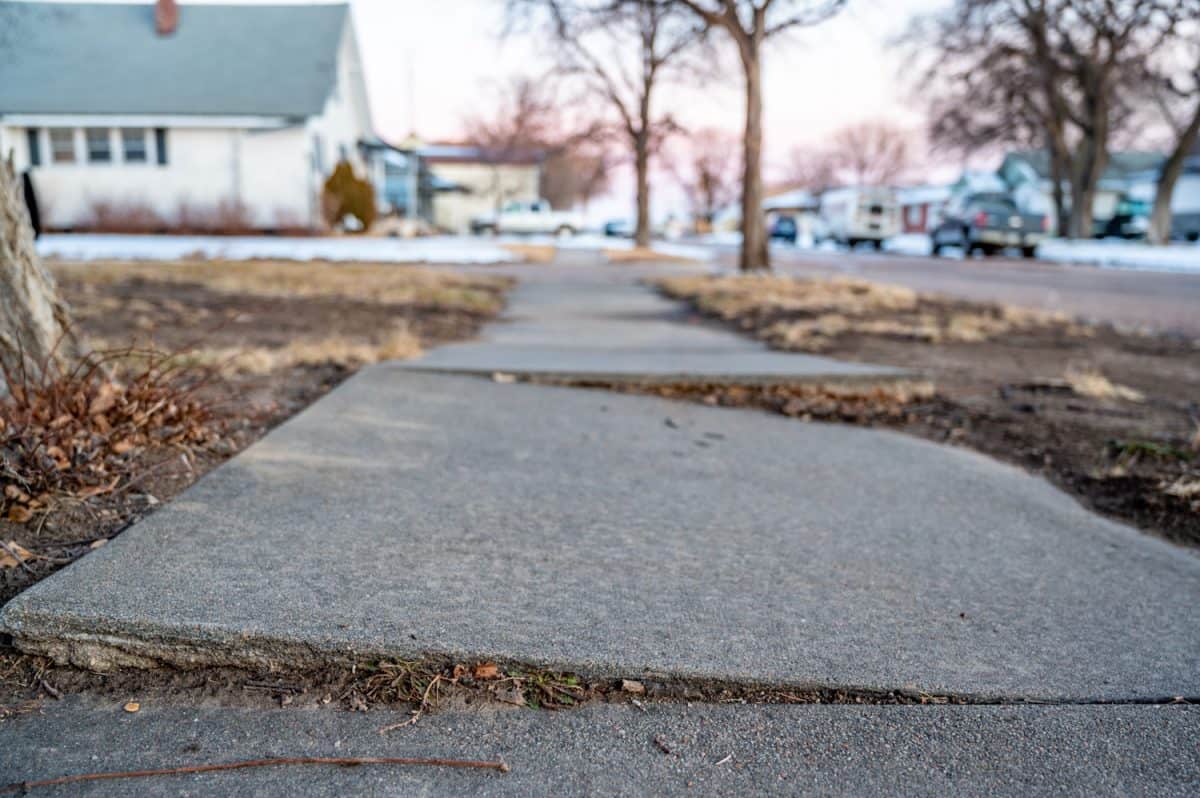
Seeing frost on the ground is an indication that you should not do any pouring. This is because when the ground thaws, the poured concrete will settle deeper as the ground becomes softer due to the presence of moisture. It will cause the concrete to crack and even completely break apart, depending on how deep the concrete settles in.
Cold surfaces also make it longer for concrete to cure and harden. What's amazing is that even during winter, if the concrete is warmer than the air temperature, it cures quicker compared to hot temperatures. Again, this is if the surface is not cold, as the coldness of the surface can be transferred to concrete.
What to do if it rains while pouring concrete?
Firstly, you should avoid doing a big pour if it is forecasted to rain, which is why it is advisable to do such projects during the summer. But in the eventuality of rain, make sure that your concrete is properly covered to avoid your pour from getting wet.
Do not let rainwater get into your concrete mix as it can dilute and damage the curing, rendering it useless.
In Conclusion
Under the right conditions, you can lay pavers even during wintertime. Projects such as laying pavers for sidewalks and pathwalks are better done through professional service as they can be too technical. Improperly installed pavers can cause heaving during the cold. This will cause you extra cost compared to properly placed ones as you would not have to have them repaired.
Before you go, here are some related articles that you might want to check out:

![Vibrant Red Paver Stone Path, Can You Spray Paver Sealer? [How To Apply It]](https://pavingplatform.com/wp-content/uploads/2022/04/Vibrant-Red-Paver-Stone-Path-600x400.jpg)
![Properly laid out red pavers for a garden, Can You Tint Paver Sealer? [And How To]](https://pavingplatform.com/wp-content/uploads/2022/04/Properly-laid-out-red-pavers-for-a-garden-600x400.jpg)
